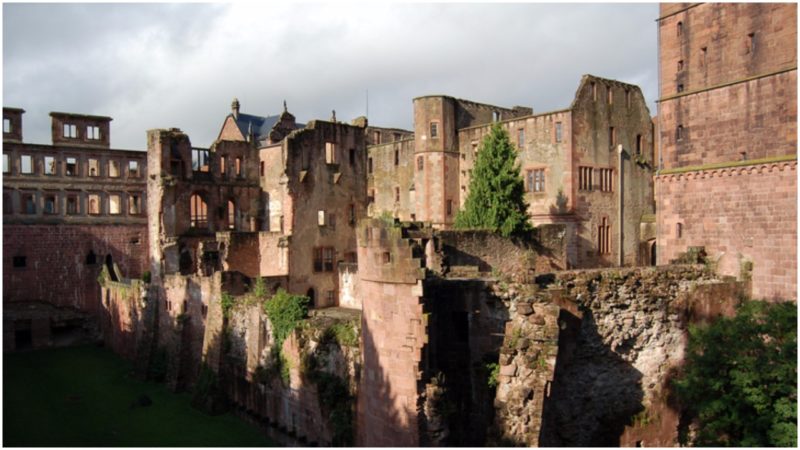Heidelberg Castle stands more than 260 feet up the hillside of Königstuhl in the Odenwald Mountains, overlooking the city of Heidelberg, Germany. The first recorded mention of this place was in 1214, when Louis I, Duke of Bavaria, received it as a gift from the Emperor Friedrich II.
It was further mentioned in a document in 1294 and then again in 1303. However, in this last document, two castles are mentioned. The first one is a castle further up the Kleiner Gaisberg Mountain that was destroyed in the year 1537, while the other is Jettenbühl Castle, the original name of Heidelberg Castle.
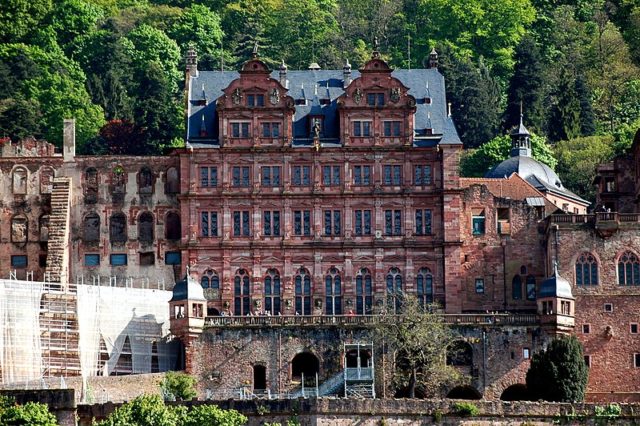
These dates create a time frame in which researchers believe the castle was built. A few centuries later, another mention of the castle can be found in a number of documents dating from the 17th century.
At the time when Rupert of the Palatinate was crowned King of Germany in 1401, the castle was still relatively small. In fact it was so small that Rupert had to sleep in the Augustinian monastery.
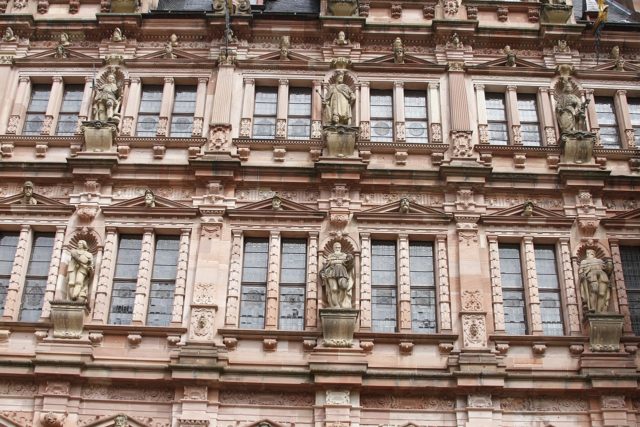
The castle itself is composed of several different architectural styles that speak clearly about the different time periods it was built through. During the reign of Ludwig V, it was extended with the addition of many fortified buildings plus the main gate. Later, in 1537, the forces of nature struck the castle in the form of a lightning strike so powerful that it caused a fire that destroyed part of the citadel. From that point on, new futures were added with each successive elector.
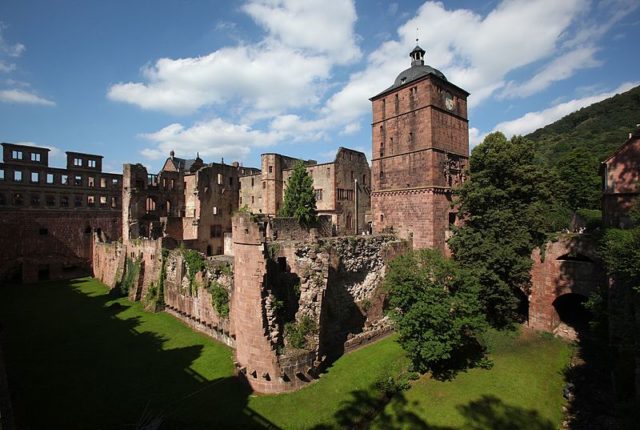
Otto-Heinrich added more grandiose buildings known as the Renaissance Wings. Next followed Friedrich, who added baroque elements to the palace, such as the English Wing. Friedrich later added Hortus Palatinus gardens. Then followed the Thirty Years’ War, which began in 1618. The castle survived this war, which was the most violent conflict Europe had ever seen, but the lavish gardens, unfortunately, did not. Despite surviving, the war the castle’s life was nearing its end.
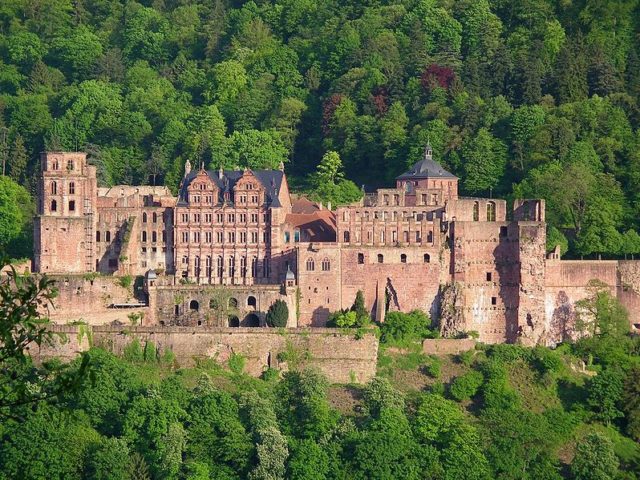
The end came when French forces destroyed the castle in an attempt to protect their lands and devastate the Palatine’s. They showed no mercy when they blew the Powder Tower and heavily damaged the castle in 1689. But their wrath did not stop there. They came back once more in 1693 to finish what they had started four years ago. The locals tried to renovate the castle and return it to its former glory.
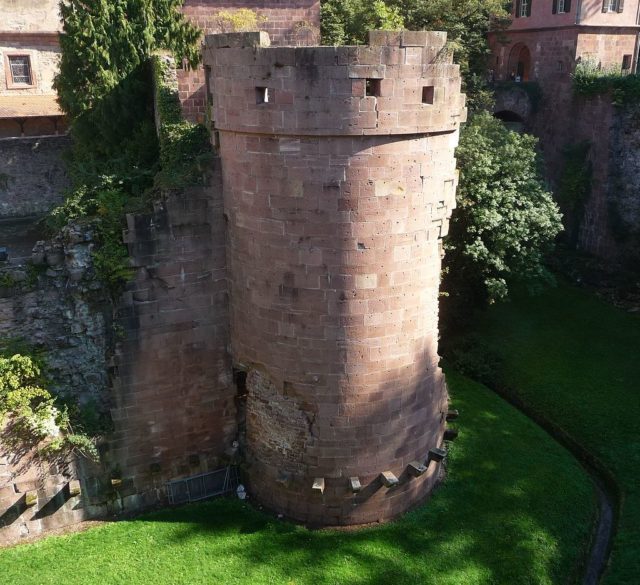
But the seat of rule was moved to Mannheim. With this move, Heidelberg Castle was left empty, abandoned, and thoroughly devastated. But the castle’s troubles were far from over. In 1764, what little remained of this place was once more hit by lightning. Such a powerful force inevitably caused damage and Heidelberg Castle was again engulfed by fire, after which the palace was nothing more than a ruin.
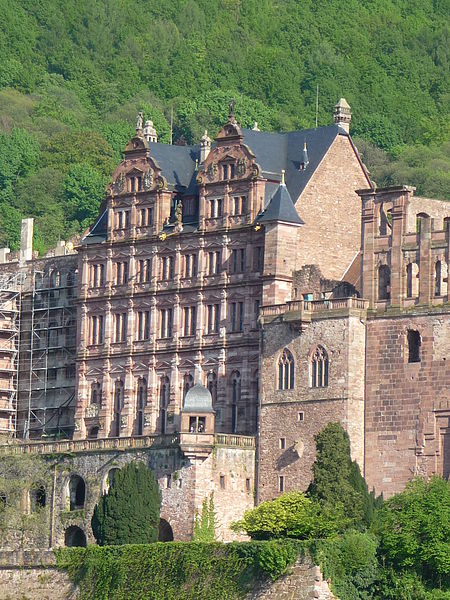
As the city below it grew, so did the popularity of Heidelberg Castle. Tucked away on a hill, this magnificent ruin has attracted tourists for decades. Poets, writers, and artists all draw their inspiration form these reddish stones. Writers such as Victor Hugo and painters like Joseph Mallord William Turner restlessly painted these old Renaissance ruins.
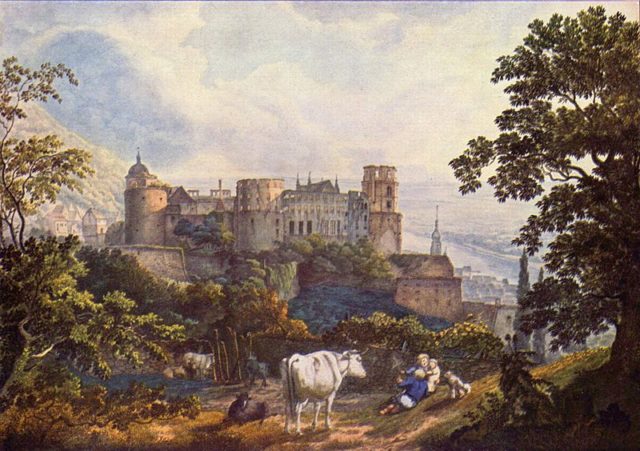
“…deserted, discrowned, beaten by the storms, but royal still, and beautiful,” writes Mark Twain about this place in his book A Tramp Abroad.
This place, old as it is, inevitably has a number of peculiar stories and legends about its past. Once such legend is about the iron ring door-knocker. The legends say that if anyone can bite through it, the castle will be given to this individual. This ring bears an uncanny bite mark that, according to the legend, belongs to a witch who managed to bite halfway through.
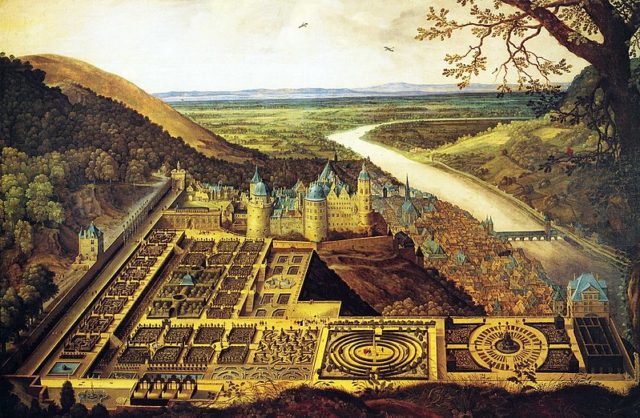
Today these ruins continue to attract people from all corners of the globe who come here to marvel at this Renaissance of the Alps or to daydream about its long-gone gardens, once known as the “Eighth Wonder of the World.”
